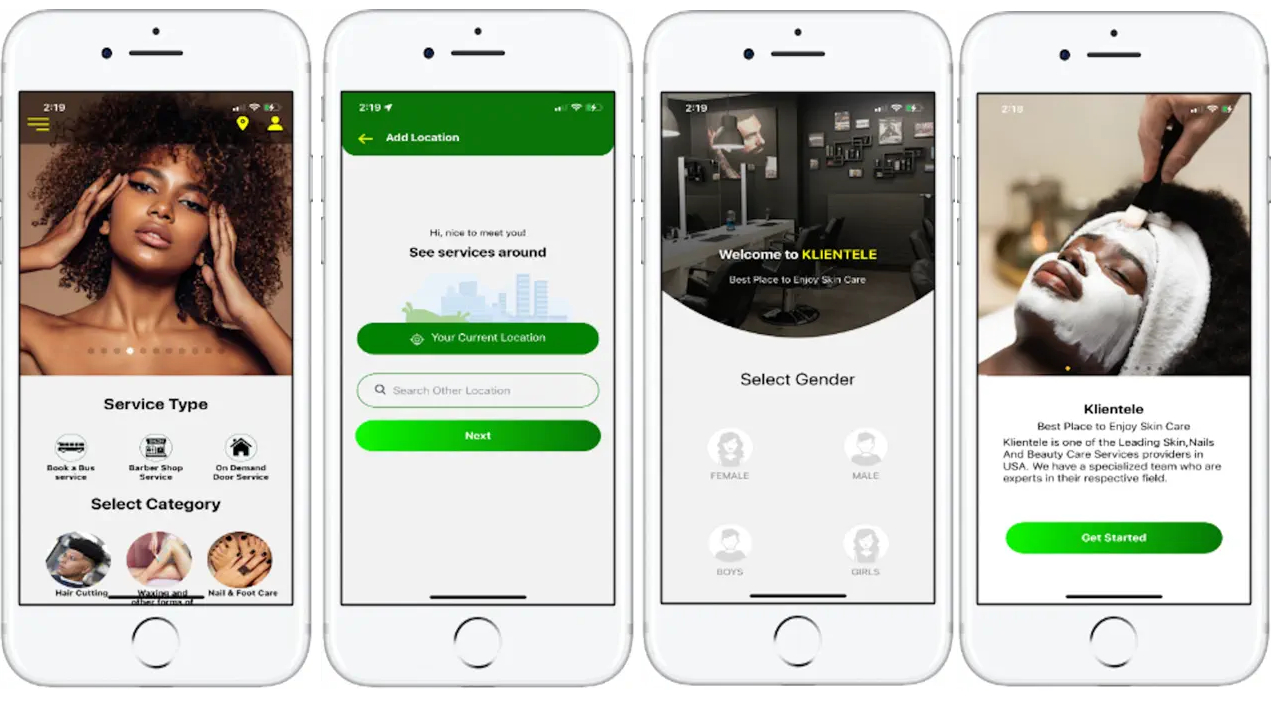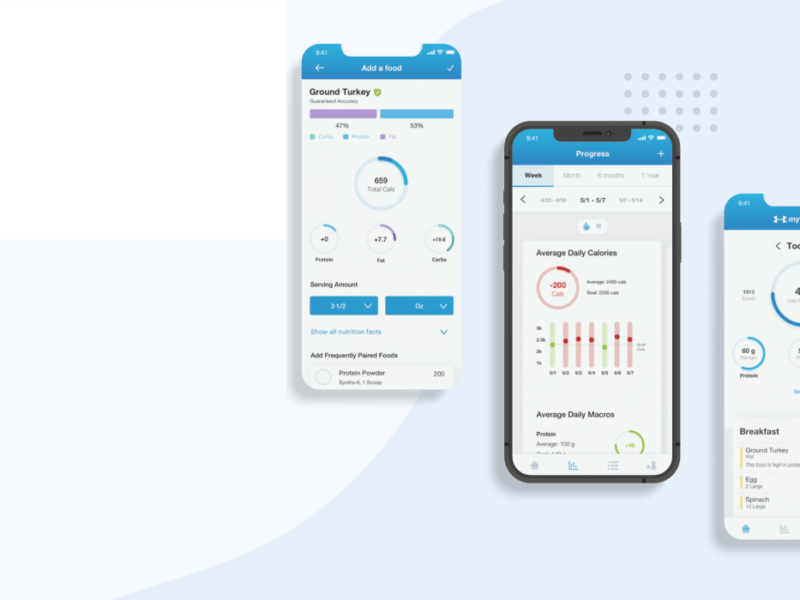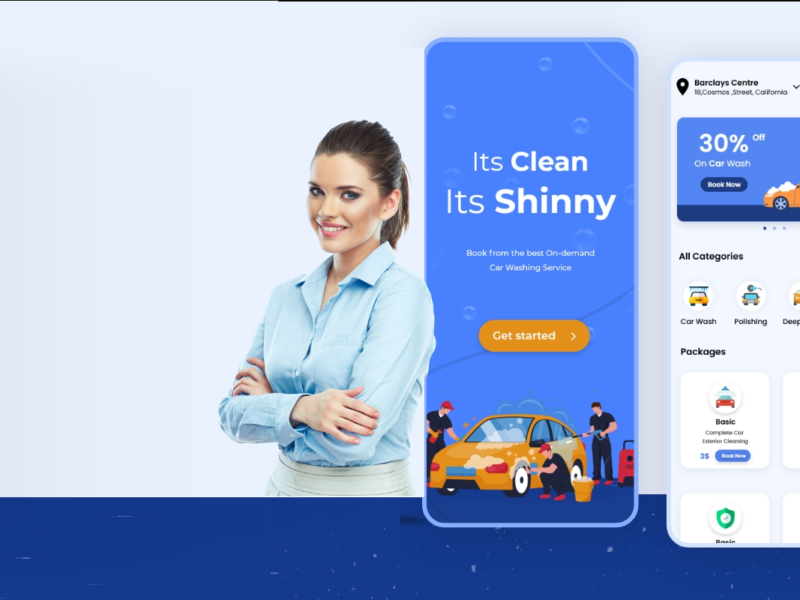The ladies rush to greet a new wave of makeover trends has led to a surge in the popularity of “beauty” applications. With more consumers seeking a fresh makeover personalized to their unique facial features, Develop a Beauty Service Mobile App has emerged as a new staple for brands operating in the beauty sector. Not just consumers are looking for makeovers, but brands are also paving their way to look more professional and demanding in the industry. And it comes as no surprise that a mobile beauty app is the ultimate element fulfilling this vision.
Modern beauty applications include many interactive features that serve as the primary source of user engagement while keeping a brand’s professionalism alive.
Beauty application demands are gaining traffic online, and as you explore the potential of beauty apps, it’s important to consider the cost of development.
Having a clear understanding of the financial requirements for building an app can help you make informed decisions and plan accordingly.
Market Size and statistics for On-Demand Beauty Service App Development
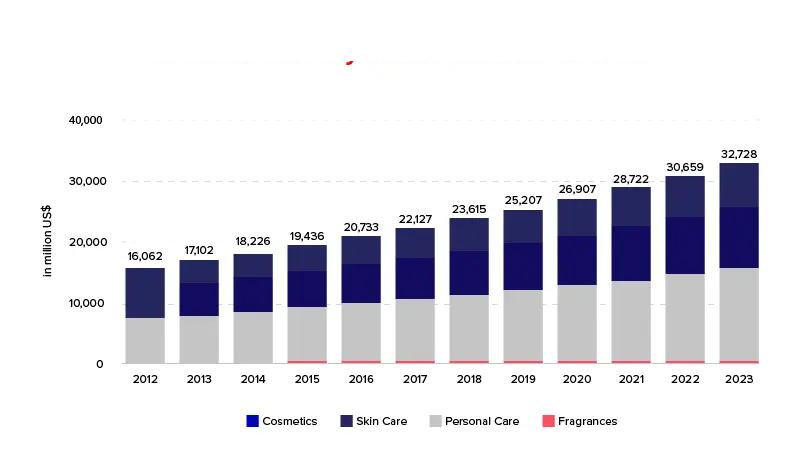
Trends, strategies, and statistics guide the way forward, and all beauty brands are expected to take the guesswork out of the equation by contacting an On-Demand Beauty Service App Development company as soon as possible.
Anything that matches traditional techniques of attracting and retaining customers is no longer supporting the businesses of beauty service providers.
However, this doesn’t represent the slow growth prospects of the beauty industry. With an annual compound growth rate of 4.75% worldwide, the beauty industry is estimated to exceed $716 billion by 2025 and $785 billion by 2027.
The rapid expansion is primarily driven by the globalized popular demand for makeovers. Modern youth are more concerned about their personalities. However, shopping preferences may differ from country to country.
Geographically, North America and Asia-Pacific regions account for more than 60% of the growth of the beauty industry. However, offline shopping for beauty products is still luring most customers.
But at home, beauty services apps have seen a significant rise from 2019 to 2022, and astonishingly, the growth trajectory of the beauty apps is consistently rising without bending.
Especially Salon, which had achieved a valuation of $162.36 million in 2020, is predicated to achieve a valuation of $375.02 million by 2026. The potential of a beauty app is comparatively huge, making it worthwhile to dive deeper to have an understanding of a salon mobile app and why it matters to your business.
Business Models for an On-Demand Beauty Service App
It is necessary for your general knowledge that salon services have no single business model. These apps are classified into two different formats, as discussed below. Take a look:
1. Dedicated app
Devoted beauty applications are dedicated to business. Unlike aggregator service apps, such applications operate just as a portfolio of a salon or brand. Applications will operate flexibly on iOS and Android devices and will provide the brand convenience of maintaining an online presence and looking professional in the beauty sector. Not only this, but brands will even have the flexibility of receiving customer queries online via these applications. In other words, customers will be able to schedule their appointment at the spa. And since limited features and functionalities are allocated, the overall development cost of a dedicated application is comparatively less.
2. Aggregator Service App
Aggregator service apps are dedicated to salons or beauty service providers that are seeking a platform that exposes their services to more customers. Such applications are exclusively meant to support the business model of another small salon through its digital presence. Such applications charge salons a convenience fee, and the terms of those charges can vary significantly. If you don’t own a salon but are still interested in the makeover and beauty industry and are impressed by its demand and growth trajectory, you don’t need to have a salon app when you can become an aggregator service app to start connecting local salons with local customers online.
On-Demand Beauty Service App Monetization Opportunities
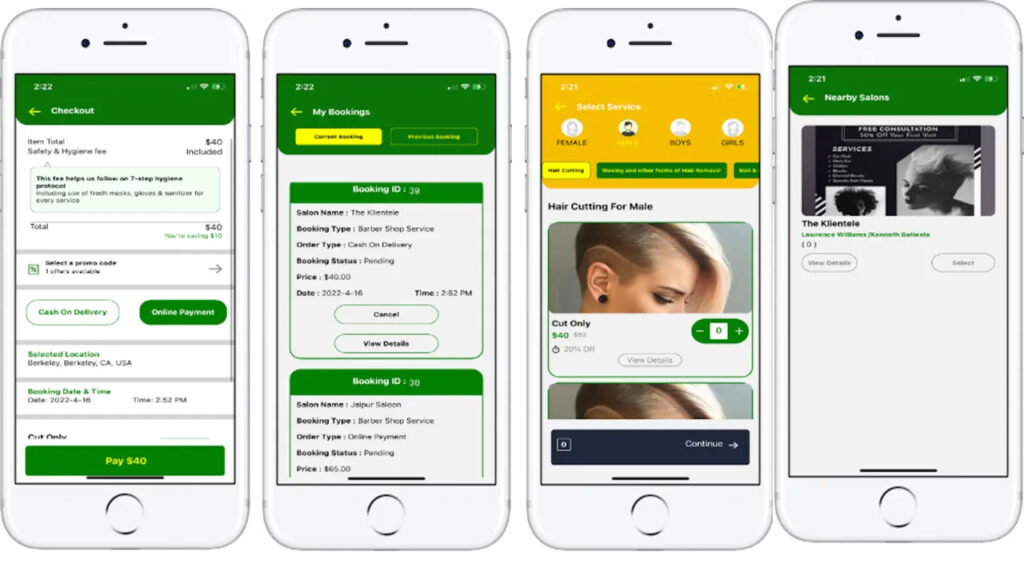
Given below is a list of some promising app monetization opportunities that you won’t want to skip trying for your salon mobile app. Take a look:
1. In-app Ads
In-app advertisements are one of the most obvious ways for developers to keep their applications productive. Simply meet the criteria of any best monetization platform like Admob by Google and get all relevant ads placed on your mobile app. Doing so, your application will transform into a passive income source.
2. E-commerce Enablement
Your beauty or salon app can also work as an e-commerce platform where you can sell your own unique range of beauty products; alternatively, you can even collaborate with other brands and sell their products as a retailer online.
3. Featured Listing
A featured listing is a unique monetization opportunity in which you eliminate your reliance on a third-party monetization platform by connecting directly with the brands. However, you can head to this option when your application is having great traffic online. You simply promote their products or services on your application in the featured section, and this one thing will attract you some good income.
4. Aggregator Selling
Aggregator selling is another interesting monetization opportunity that most clients are opting for along with their On-Demand Beauty Service App Development. With the term aggregator, we basically meant a platform where you will be promoting salons and beauty service providers to your customers. In other words, your app will be working as a convenience platform where you can charge a convenience fee on every customer or client you bring to a salon.
Crucial Things to Know Before Establishing Beauty On-Demand Beauty Service Applications
Most beauty apps stood out in the online beauty industry because they were first-movers. But competition is fierce today, and it is necessary to learn all the crucial things that will make your salon application popular among customers.
Who are your users?
Your mobile beauty app will generate fruitful results only after you make it user-centric. Its interface should be aligned with the user’s requirements. If it is a service-based app, keep it descriptive; if it is a product-based app, pay utmost attention to the navigation and layout. An interactive user experience may make a difference, but only when it keeps users focused on the core message. If the application is for young girls, boys, or elders, keep these little things in mind.
What are the main objectives?
Do you want customers to schedule their visit on the app? Or do you want customers to purchase your products online? Most applications even provide beauty services through a dedicated application; do you want that one? Set a clear objective and make sure the app is built accordingly. Anything uneven or unfriendly won’t work for your business model.
How it would be unique?
The last but an extremely vital point is: how will you make it unique? Bear in mind that the market has dozens of on-demand beauty services, and a similar range translates to the mobile application. You should aim to bring something unique to the customers; only then will you be able to stand out in the competition. Gone are those days when anything featured online was supposed to become popular overnight. Only unique applications will dominate the sector.

Types of Beauty Salon Apps You Must Look Upon in 2023
Given below are the major types of salon apps that you should ask for from an On-Demand Beauty Service App Development company. Make sure you first have a well-planned business model in place before heading straight to the development.
1. Salon and Spa App
This category of app is popularly designed for brands offering a broad-ranging beauty solution to customers. Simply put, salon and spa apps are famous for hair spas, manicures, body spas, and other relevant service providers.
2. Specialty Salon App
Specialty salon apps are in demand among entrepreneurs or innovative startups in the beauty and skincare sectors. These applications cater to the specialized business requirements of a salon brand.
3. Rental App
A rental salon app is also a cost-effective alternative for salons that can’t afford an application right now but would like to reap its benefits by leasing one. The brand will simply use this digital space for a desired time period and will strive to attract customers through it, for which it will be paying a rental amount to the application owner.
4. In-house Salon
Most beauty service apps are designed for the individual use of salons and are mostly handled by in-house specialists who actively manage activities linked with the mobile app. Such applications are offered to customers and may be used inside restaurants only. For example, the application may provide customers in a salon with the flexibility of selecting their products or services through the app.
5. Mobile Salon Services
The application variety is popular nowadays. Mobile salon services provide customers the convenience of having salon services at home. Customers simply put forward their request on the app, and the system then sends the request to the expert who visits the customer’s home.
6. Commission-based Salon App
A commission-based salon application refers to an aggregator application that helps salons get online visibility through its marketplace. Multiple salons are listed on these applications, which is exactly similar to restaurants listed on an aggregator platform like Zomato.
On-demand beauty services app—General Features
As you are determined to have a salon services app, let’s take a look at some of the must-have features that will match your mobile app to the industry standard. Take a look now:
1. Interactive UI/UX
User interface and user experience are the staple elements of beauty and salon applications. So be serious about this area, which helps your beauty and salon apps look professional and super cool to the customers.
2. Appointment Booking
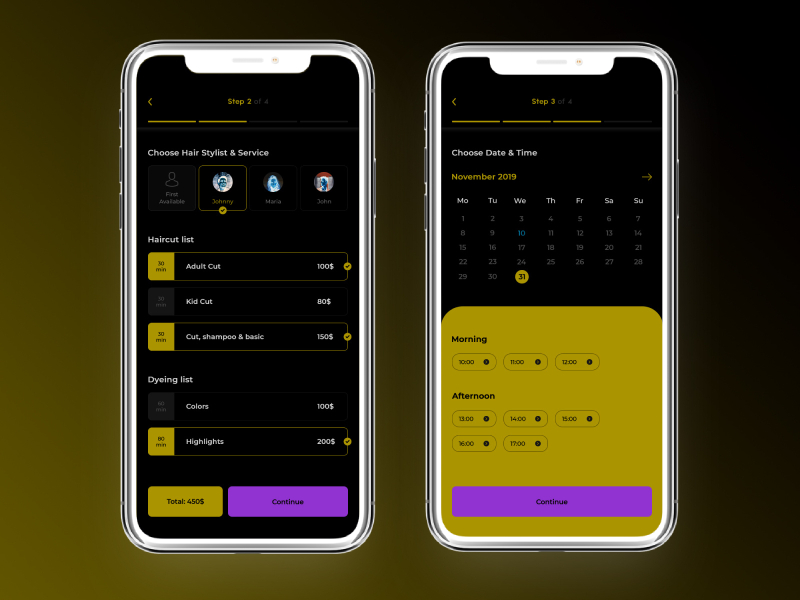
Some famous salons or parlours find it super tough to handle too many customers visiting them in the busiest hours. As a result, the risk of losing some potentially loyal customers rises automatically. But this is where appointment booking system in app comes for the help. The customer will simply book an appointment, and their seat will be specifically reserved.
3. Integrated Payments
An integrated payments feature is always advised by the salon app builder. The payment option not only provided customers with the flexibility of receiving products and services through it, but it even let them make payment for the products and services at the same time through a similar interface. The representative will have no need to ask the customer to pay a particular amount for the service, as that information will be provided on the app itself.
4. Reviews and Ratings
No application, especially a dedicated beauty app, will have a bright future until some positive reviews and ratings are bursting on the interface. More customers are drawn to such applications and would be more interested in purchasing their products or services if the app has the most positive reviews and ratings. Always stay original if you want customers to pay in advance.
5. Booking Management
Order placement, order history, order acceptance, and order rejection—all such facilities must be inserted on the beauty app for it to fully work for you. Get a complete list of booking management features from the developer if you can’t figure out the best options.
6. Marketing collaboration
Options for marketing collaboration must be added to the app. After all, you won’t just want to rely on one revenue source in your business but on multiples.
Advanced Features of the On-Demand Beauty Salon App
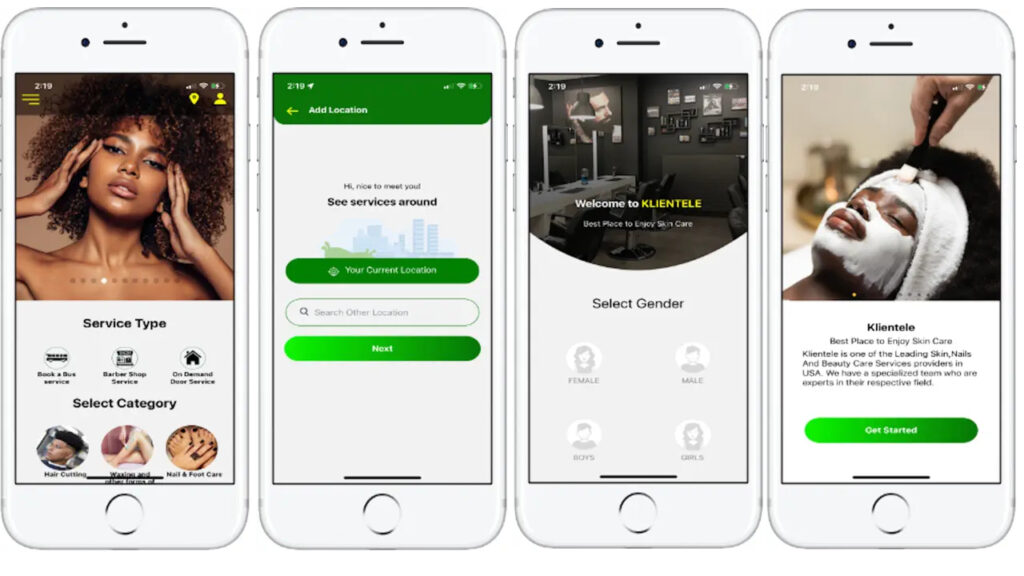
Let’s explore some additional features you will find in On-Demand Beauty Service App Development, mainly in the advanced section, because these features aren’t available on every salon-based mobile app.
1. Geo Locations
However, the feature isn’t necessary for brands that sell products online. But if you own a salon and provide services at any one or multiple shops under your brand, you can enable geolocation on the app so that customers can visit you without delay or error.
2. Real-time tracking
Real-time order tracking is an excellent way to keep customers entertained and retained in the business because nothing can be more soothing than watching their order come to their doorstep or their service be received soon.
3. In-App Navigation
In-app navigation provides users seamless access to the desired feature, which could be anything from GPS tracking to order placement through a special menu.
4. E-Store Integration
On-demand beauty service integrates an e-commerce store where customers receive the option of purchasing a desired salon product at a price that translates to their unique need and choice.
5. In-app Chat and Call
In-app chat and calling is an on-demand feature and the most requested feature by customers in the salon application by which they get the flexibility to communicate with their desired brand.
6. Push Notification
Push notifications alert customers about the particular products or services they would be more interested in exploring or the products or services they have already placed an order for. The notification keeps users engaged with the salon app, which brings more loyal customers into the business.
7. Advanced Analytics
Advanced analytics makes it super easy for salon businesses to monitor their business, which further guides the salon in developing business-boosting strategies. Alternatively, it will guide them on when it is the right time to scale a business.
8. Other Integration
Other integrations come into play that are exclusively aimed at making an app more unique and advanced so that it begins to beat the competition.

Tech Stack for On-Demand Beauty Salon Service App Development
Modern applications are technically rich and feature multiple on-demand functions that become an asset to your salon business as well. Without an appropriate tech stack, your application won’t be industry-ready. Therefore, we will make sure that your beauty app receives everything it needs to stand out in the competition in the end. Given below is a list of these technologies that will determine the foundation of your beauty application. Take a look
Push notifications—FCM and APNs
Data Management: Datastax
SMS/Phone Verification: Nexmo, Sinch, Twilio
Accepting Payments: Stripe and PayPal
The Universal Operating System (UOS)—CentOS, Debian, Ubuntu, etc.
Powerful Programming Mandrill – GWT
Cloud Environment: Google and AWS
Similarly, many other innovative tech stacks will be considered by the developer, which will make your beauty or salon app ready to launch in the industry.
Required team structure to develop the beauty service app
Let’s take a look at the required team structure, which will help you through the On-Demand Beauty Service App Development process and eventually get it established in the industry where you want it to flourish.
Business Analysis Team
Android and iOS developers
Project Manager
Front-end developers (AngularJS developers, UI/UX developers)
Backend developers (PHP developers, Node.js developers, and .Net developers)
QA Professionals
Each of these working professionals is capable enough of helping you get on-demand beauty services on your first call. Depending on your business model, you may or may not require every expert at some point.
Cost to Develop an On-Demand Beauty Salon Service App
The cost of developing a beauty on-demand app can vary significantly, and the primary reason is duration. On average, a salon service app may take up to 6-8 months to build. Similarly, development cost, team cost, and additional cost can readily lift up the cost of the overall contract to up to $40k to $60k per platform. However, costs can be reduced based on the tools, skills, and experience of development firms.
How Can You Earn Money on Your On-Demand Beauty Salon App?
Apps for beauty services at home can create multiple revenue streams, and the total earning scope rises gradually once your app becomes eligible to match the earning format of the given revenue stream. Ideally, you should build a solid user base and be well-informed about your analytics. Only then will your company be able to profit more from your on-demand beauty salon app.
Conclusion
As you are heading for On-Demand Beauty Service App Development, let’s gain a quick understanding of the app before you start the process. Mobile applications are surging in popularity, and the beauty sector is also untapped. Applications are the new face of the beauty industry, and revenue opportunities are also outstanding. However, the development cost can be high, but it will largely depend on the features you seek.

